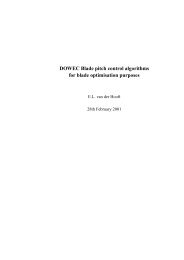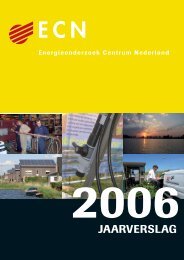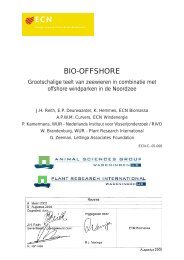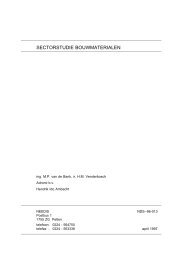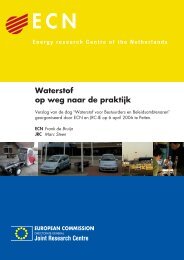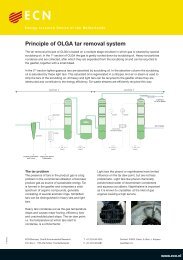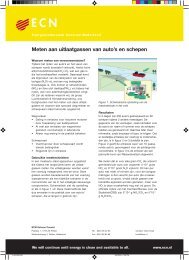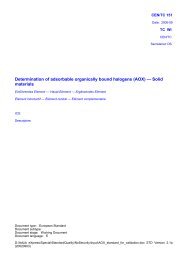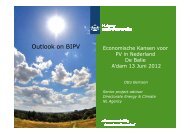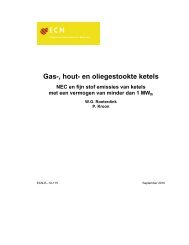PDF format (503 kB) - ECN
PDF format (503 kB) - ECN
PDF format (503 kB) - ECN
Create successful ePaper yourself
Turn your PDF publications into a flip-book with our unique Google optimized e-Paper software.
From figures 4 and 5, CO2 removal evidently emerges as a key technoloy in achieving emission reductions<br />
within primary production routes. However, the emission factors of electricity and steam are very important for<br />
the ranking of the primary<br />
routes.<br />
As shown in figure 4, with<br />
emission factors of 0.1 for electricity<br />
and 0.06 for steam, Corex<br />
is the outright winner, thanks to<br />
its large excess energy production,<br />
which in this scenario prevents<br />
CO2 emissions by the<br />
electricity generation. Of the<br />
primary routes, CCF has second<br />
lowest emissions, followed by<br />
MIDREX and Circofer. The<br />
blast furnace routes profit least<br />
from the removal, due to the<br />
large share of processes without<br />
removal, and the small excess<br />
energy production.<br />
With zero emissions for electricity and steam (figure 5), the picture changes profoundly. Going from Circofer,<br />
MIDREX, CCF to COREX, the emissions rise, the exact opposite of the previous ranking. CCF and COREX do<br />
no longer profit from their excess energy productions. The ranking of the blast furnace routes does not change,<br />
they have the highest emissions. Overall this scenario offers the highest possibilities for emissions reduction,<br />
without in any way compromising the steel quality by the addition of extra scrap. With regard to the costs, CCF<br />
is the outright winner in all included scenarios.<br />
Tables 3 and 4 give an overview<br />
of the emissions and costs of the<br />
production routes in the various<br />
scenarios, including scenarios<br />
with high, 30%, scrap addition<br />
in primary production routes,<br />
not shown in the figures. When<br />
slight decreases of steel quality<br />
are acceptable, further reduction<br />
of emissions results from maximum<br />
scrap input.<br />
tonne CO2/tonne liquid steel<br />
ECU/tonne<br />
2.5<br />
2<br />
1.5<br />
1<br />
0.5<br />
0<br />
200<br />
180<br />
160<br />
140<br />
120<br />
100<br />
80<br />
60<br />
40<br />
CO2 emissions of steel production<br />
0.1 t CO2/GJe, low scrap<br />
bf 150 bf 250 corex ccf midrex circofer ac eaf dc eaf<br />
Production route<br />
Costs of steel production<br />
Low scrap<br />
bf 150 bf 250 corex ccf midrex circofer ac eaf dc eaf<br />
Production route



